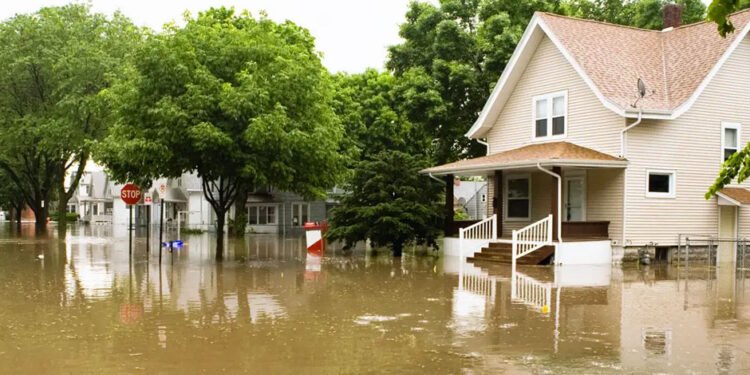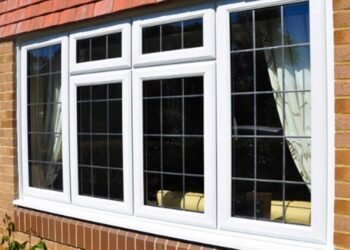Natural disasters can wreak havoc on homes and communities, striking at any time without much warning. They come in the forms of tornadoes, wildfires, hurricanes, and earthquakes. And they can be deadly and costly. That’s why preparation is so important to protect the safety of your family and property.
Weather outlets do a fine job alerting their community to dangers. However, it’s often impossible to predict exactly when a natural disaster will occur. Thankfully, homeowners can prepare themselves in advance to minimize the chance of harm. Read on to find out how you can safeguard your home from natural disasters.
1. Investing in Homeowners Insurance
You are probably concerned about the financial impact of a natural disaster. To protect yourself against financial devastation, invest in homeowners insurance. While typical policies cover events like fire and windstorms, they do not necessarily provide coverage from all types of natural disasters.
Spend time going over your policy with your agent to fully understand what is covered and what isn’t. You may need to add additional coverage or buy separate policies. If you live in an earthquake-prone state, like California, you may want to add earthquake insurance for more complete coverage. In coastal regions, like Georgia or Florida, you may want to invest in hurricane insurance.
Getting a quote for home insurance will help ensure that you’re protected against the unexpected. Appropriate insurance coverage will also help you recover more quickly in the aftermath of a disaster. Working with your insurance provider will allow you to assess your risks and meet your specific needs.
2. Reinforcing Doors and Windows
When protecting your home, reinforce your doors and windows. These are the typical points of entry for natural disasters like wind storms, hurricanes, and tornadoes. For your windows, you’ll want to install storm shutters over the glass. This protects the windows from being broken by flying debris, like rocks or tree limbs. If you don’t have storm shutters, you can take action when bad weather is forecasted. Cut sheets of plywood to cover the window frames, keeping debris from breaking glass and causing interior damage.
Look into purchasing impact-resistant doors from reputed home suppliers like Storm Pro Window and Door company if you live in an area known for wind damage. They are more expensive than standard doors, but they improve the structural integrity of your house. They can reduce the risk of the door being broken down and rain entering your home, which can save you money in the long run. When preparing for natural disasters, don’t forget to reinforce your garage door too. They are not built to withstand high winds and are liable to break in a storm. You can utilize temporary garage door braces to strengthen the door and prevent damage.
Wildfires are difficult, but not impossible, to prepare for. Hang heat-resistant curtains to reflect some of the heat from the fires. They also help with extreme temperatures, so the glass doesn’t crack or shatter. Since the curtains have insulating properties, they keep the home’s interior cooler, which is just plain helpful in hot summer months.
3. Prepping Your Yard
Just like you want to prepare your house for upcoming storms, you’ll want to focus on your yard, as well. Trim back tree branches that extend near the structures on your property. Pay close attention to any dead limbs or ones hanging over your home. High winds can break these branches, and they can end up damaging windows or the exterior of your home.
Your landscaping choices can help prevent damage if you live in an area prone to wildfires. Damage from wildfires in 2022 cost a whopping $8.9 billion. However, you can help keep fires away from your home by planting fire-retardant vegetation around your home. Options include sage, aloe, sumac, and lavender, all of which are less likely to catch fire. Also, for your decorative elements, use materials like stone and concrete rather than wood or mulch.
If you have lawn furniture and decor in your yard, you will need to secure or move them prior to a storm. In high winds, they can become projectiles that damage property. Anchor or store lawn chairs, children’s toys, and patio umbrellas. If your lawn furniture is in the grass, purchase spiral rods to secure it. If it is on wood or concrete, use posts and screws to fasten it down.
4. Preparing Inside Your Home
Earthquakes can knock over even the heaviest of furniture, so you’ll want to anchor down your furniture and large appliances. Install earthquake straps or brackets to prevent them from shifting or falling during seismic activity. For tall furniture like bookcases and cabinets, use anchors, brackets, or straps so they don’t tip over. You can also add museum putty to fragile trinkets to keep them secure.
Be aware of the placement of heavy decor, as well. Statues, vases, and other heavy objects should be placed on lower shelves for display. Not only are they less likely to break if they fall from a bottom shelf, they are also unlikely to cause injury. Avoid placing decorations above beds or couches where people may be during an earthquake. Someone could get seriously injured if something heavy falls on them.
You should also install a backup power generator in case the power goes out for a long time. This often occurs during hurricanes or wind storms. Gas-powered generators should be kept outdoors to prevent carbon monoxide poisoning.
Preparing Your Home
Whether it’s a hurricane, earthquake, or other natural disaster, you need to take the time to prepare your home in advance. Knowing that you’ve taken every step you could to safeguard your family and your home gives you peace of mind. Weather the storm with ease by prioritizing advanced preparation. You can decrease the risks you face from natural disasters and know that your home — and your family — is safe.












